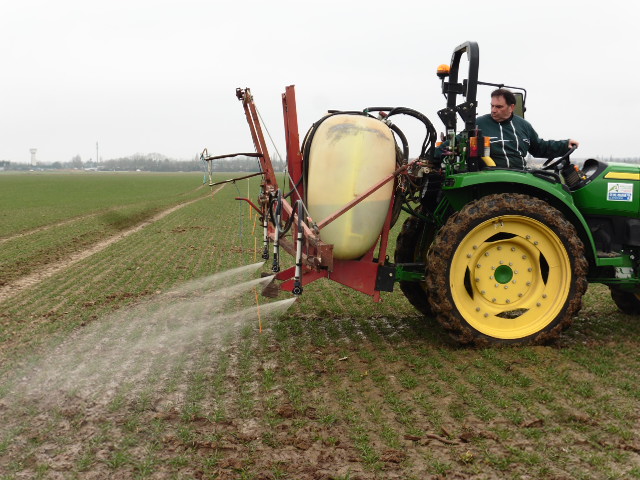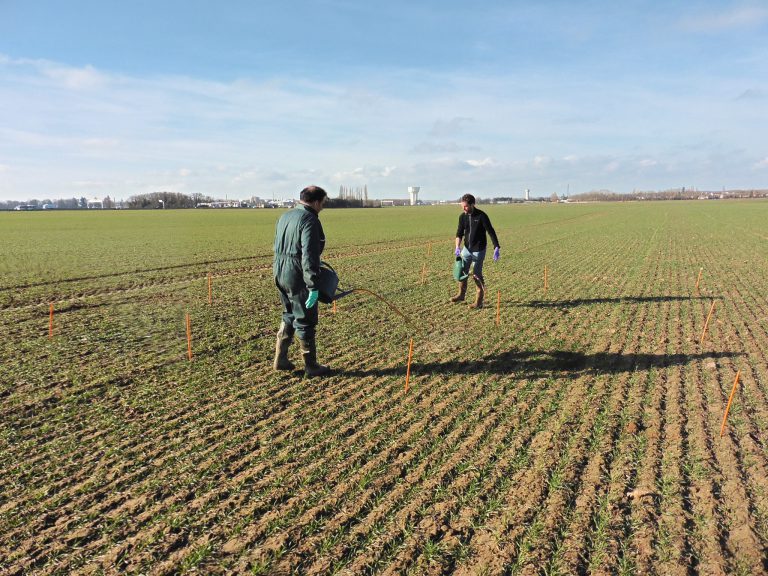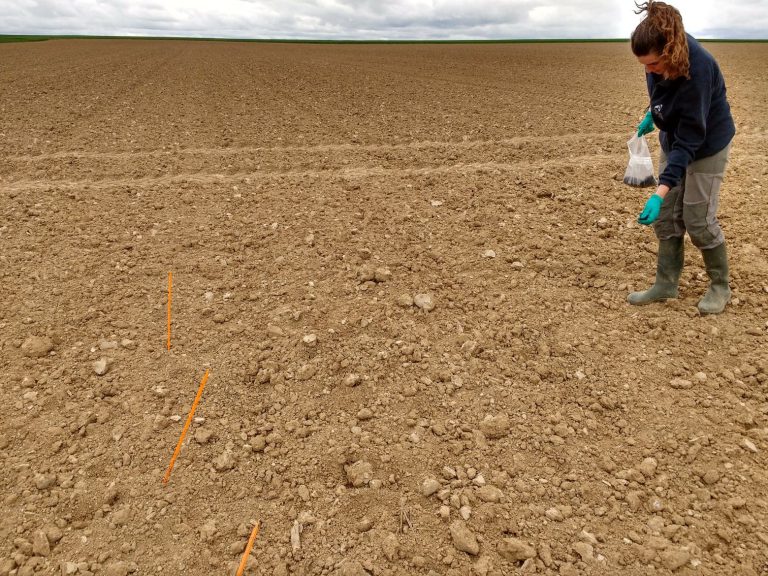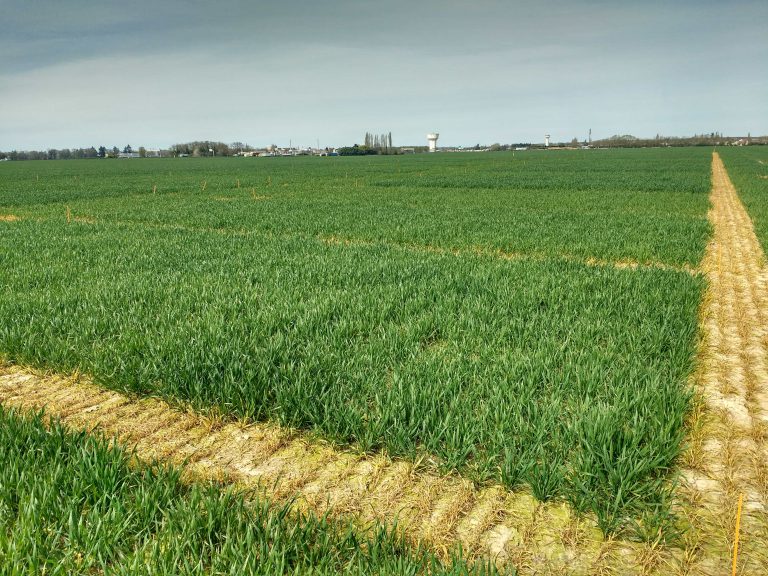Under perioden december 2018 till februari 2019 har vi installerat och använt 8 stycken prototyper av urinsorteringsanordningar i familjestorlek, i Uppsala. I slutet av processen lyckades vi producera 40 kg torrt gödselmedel (vilket våra kollegor i Frankrike kallar för ”granurin”) med ett kväveinnehåll på 10 %. Vi lyckades sålunda torka nästan 500 liter urin, vilket är vad en genomsnittlig person urinerar på ett år. Detta gödselmedel appliceras nu och testas som en del av AGROCAPI-projektet, där syftet är att “studera den agronomiska valoriseringen av produkter som härrör från urinkällans separation”. Försöken utförs i Frankrike av Tristan Martin och kollegor vid det nationella institutet för jordbruksforskning (INRA).
Agricultural field trials on dehydrated urine – “Granurin”
Between December 2018 and February 2019, we installed and used eight family-scale urine dehydrator prototypes in Uppsala. At the end of this period, we managed to produce 40 kg of dry fertiliser (which our collegues in France call “granurin”) with a nitrogen content of 10%. We thus managed to dry nearly 500 L of urine, which is what an average person urinates in a year. This fertiliser is now being applied and tested as part of the AGROCAPI project, where the intent is to ‘study the agronomic valorization of products resulting from urine source separation’. The trials are being carried out in France by Tristan Martin and colleagues at the Institut National de la Recherche Agronomique (INRA).
Makoto joins Kretsloppsteknik
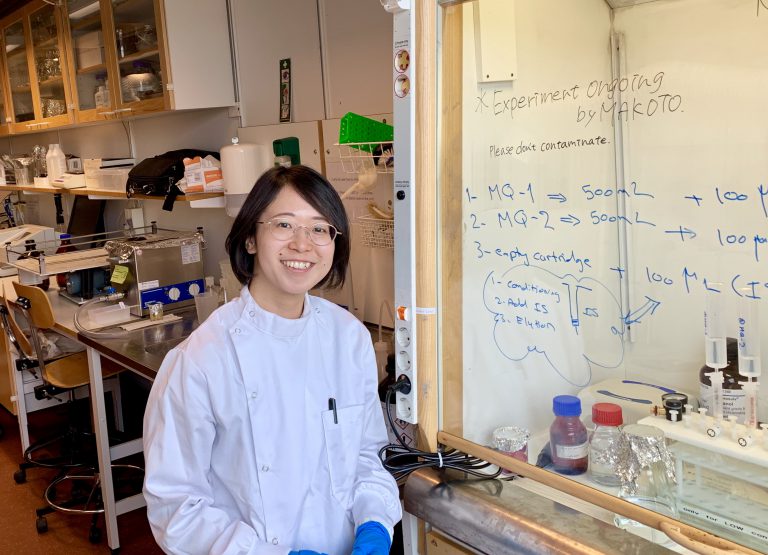
Hi, I’m Makoto from Japan. I will work on the analysis of perfluoroalkyl substance (PFAS) and pharmaceuticals in wastewater with Sahar Dalahmeh at SLU’s Kretsloppsteknik group. Since I have been interested in sanitation research right from my Environmental Engineering bachelor studies in Japan, I am grateful for this opportunity to continue to learn and work at SLU.
Makoto går med i Kretsloppsteknik

Hej, jag heter Makoto och kommer från Japan. Jag kommer att arbeta med analys av perfluoroalkylsubstanser (PFAS) och läkemedel i avloppsvatten med Sahar Dalahmeh från SLU:s Kretsloppsteknikgrupp. Eftersom jag har varit intresserad av sanitetsforskning från mina kandidatstudier i miljöteknik i Japan, är jag tacksam för denna möjlighet att fortsätta lära och arbeta på SLU.
Projektmöjlighet: applicera urinbaserat gödningsmedel i aeroponics
Föreslagen rubrik: Identifiera optimala appliceringsgrader för urinbaserade gödningsmedel för basilika som odlas i klimatkontrollerade aeroponic-kammare.
Krediter: 30 poäng; Nivå: Avancerat
Ämne: Teknologi eller miljövetenskap
Start: Höst 2019 (flexibel)
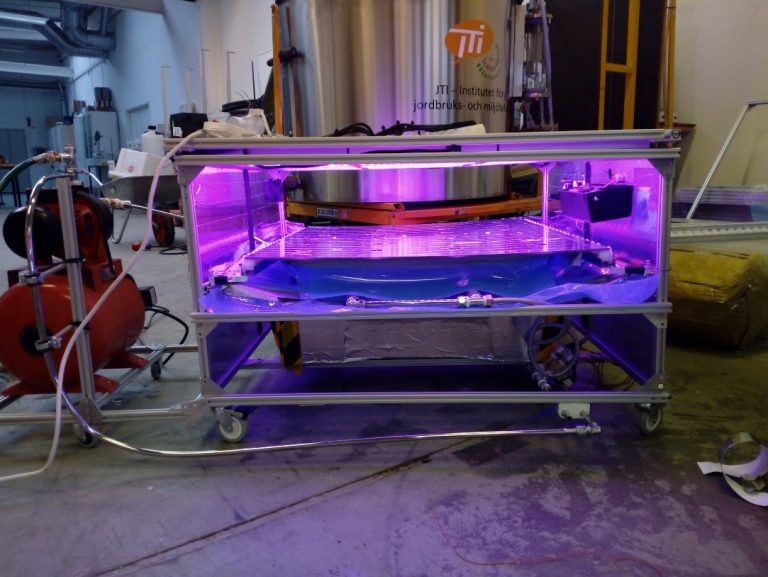
Project opportunity: applying urine-based fertiliser in aeroponics
Proposed Title: Identifying optimal application rates of urine-based fertilizer for basil grown in climate-controlled aeroponics chambers.
Credits: 30 credits; Level: Advanced
Subject: Technology or Environmental Science
Start: Fall 2019 (flexible)

Nordic Biochar Network: Char and biochar workshop in Denmark
Char and biochar workshop 2019
Applications, characterization, production
When? Friday, May 24th 2019
Where? DTU Lyngby Campus, Søltofts Plads – Building 229 (Lounge)
Nordic Biochar Network: Char and biochar workshop in Denmark
Kol och biokol workshop 2019
Applikationer, karakterisering, produktion
När? Fredag 24 maj 2019
Var? DTU Lyngby Campus, Søltofts Plads – Building 229 (Lounge)
Kretsloppsteknik at Uppsala city library to discuss our current water-borne sanitation system
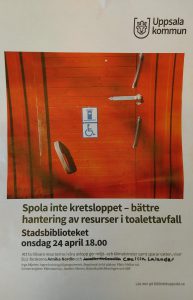
Next week, Annika Nordin and Cecilia Lalander, Researchers at Kretsloppsteknik will be at the Uppsala City Library to discuss why our current water-borne sanitation system is not as good as many might think. They will present what we believe will be the future sanitation solutions, which in a better and more efficient way safeguard and manage the resources in our sewers.
Kretsloppsteknik vid Uppsala stadsbibliotek för att diskutera kring vårt nuvarande vattenburna sanitetssystem

Nästa veckan kommer Annika och Cecilia från Kretsloppsteknik till Uppsala stadsbibliotek för att diskutera kring varför vårt nuvarande vattenburna sanitetssystem inte är så bra som många kanske tror och presentera vad vi tror kommer vara framtidens sanitetslösningar, som på ett bättre och mer effektivt sätt tillvaratar och hanterar resurserna i vårt avlopp.

